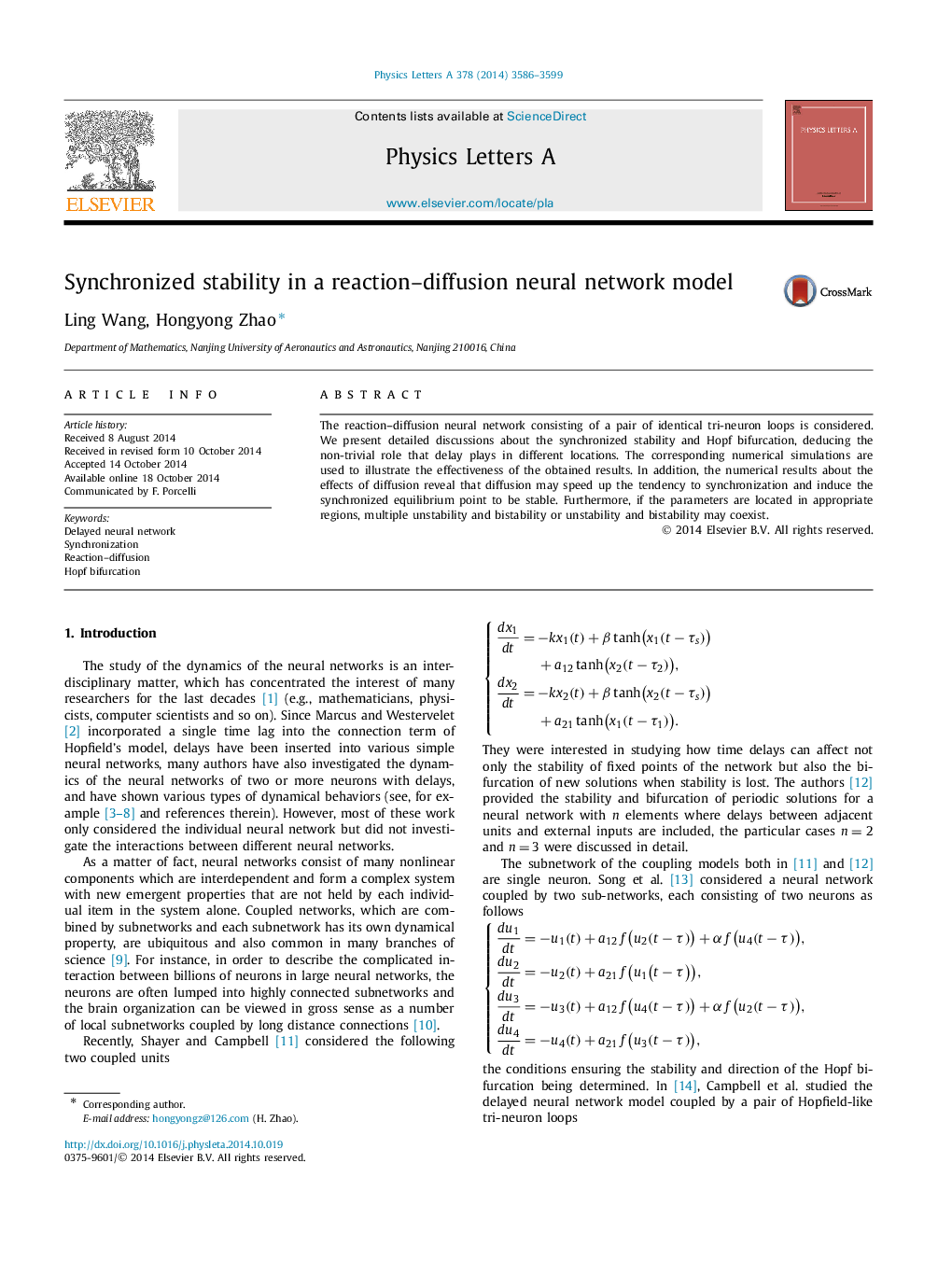| Article ID | Journal | Published Year | Pages | File Type |
|---|---|---|---|---|
| 1863891 | Physics Letters A | 2014 | 14 Pages |
•Point to non-trivial role that τ plays in different positions.•Diffusion speeds up the tendency to synchronization.•Diffusion induces the synchronized equilibrium point to be stable.•The coexistence of multiple unstability and bistability or unstability and bistability.
The reaction–diffusion neural network consisting of a pair of identical tri-neuron loops is considered. We present detailed discussions about the synchronized stability and Hopf bifurcation, deducing the non-trivial role that delay plays in different locations. The corresponding numerical simulations are used to illustrate the effectiveness of the obtained results. In addition, the numerical results about the effects of diffusion reveal that diffusion may speed up the tendency to synchronization and induce the synchronized equilibrium point to be stable. Furthermore, if the parameters are located in appropriate regions, multiple unstability and bistability or unstability and bistability may coexist.
